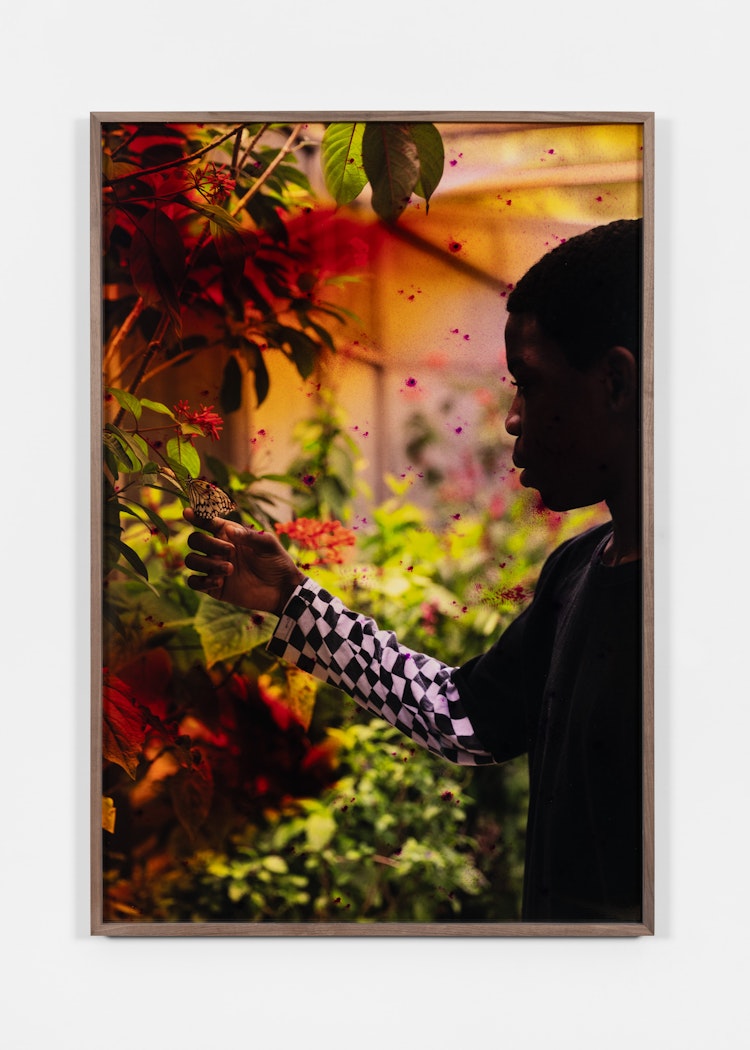Primrose Paths


The exhibition opens Thursday the 21st of March, 6 - 8 pm
The life stages of a butterfly – from egg, larva, chrysalis – to its ephemeral adult form, are a manifestation of nature's transformative powers. Similarly, the fragility of a photographic print, susceptible to fading and deterioration over time, embodies a temporality that mirrors the butterfly's fleeting lifespan. They challenge our perception of stability and permanence.
The resemblance between the life stages of a butterfly and the fragility of a photographic print is not merely superficial; it speaks to a deeper truth about the nature of our existence. The harsh realities of physical life. Both the butterfly and the photographic print exist in a realm where art is not confined to a specific medium, but is a way of reconfiguring our understanding of the world.
In his latest works, Christian Tunge has chosen an intricate process of capture, edit, manipulation and exposure. While using lightjet as a form of printmaking, a digital / analog hybrid, the artist has added an indexical and unique touch to each print. With the invention of the lightjet one could feed a digital source to a traditional chemical printing process, and expose photosensitive paper through the means of a laser. A leap from the cumbersome process of the traditional darkroom. By using this method, Tunge has been able to expose his digital capture to photographic paper. However, in the midst of the metamorphosis between digital pixel and chromogenic print, a manipulation occurred by adding traces of light through the means of lasers and lights by hand. Thus, the artist has left a unique mark of light on each print, meddling with the assumed perfection of the computerized process as if altering the digital DNA.
According to Rancière, the emancipated spectator is one who actively participates in the creation of meaning and significance, rather than passively consuming pre-determined messages or images. In this sense, our encounter with a butterfly or a photographic print is not simply a passive act of observation, but a dynamic and interactive process of interpretation and engagement. The physical lived experience in real time versus the fleeting moment of the digital. The agency of a butterfly in its mutational stages similar to the print surface revealing itself to us during exposure.
However, the photographer is more of a spider, with its web-like tool for capture. In the book Anywhere or not at all Peter Osborne claims that a photograph is an «objective illusion of temporal objectification». He further claims that a photographic image cannot be limited to the definition of a medium per-se, as it exists everywhere all at once. The same image is found in the negative, on the print-surface, on the screen and floating through the internet. It is a medium which cannot be bound down to one object. Perhaps the digital image is much like the butterfly; seemingly multiplied in numbers, floating freely – in contrast to the bound form of the physical print. Nonetheless, isn’t it sometimes in the deathlike grasp of the cobweb, that we stop, focus and really contemplate our existence?
- Bjarne Bare
The exhibition is supported by Arts and Culture Norway and Forbundet Frie Fotografer
- -
Press: Aftenposten, 03.04.2024, Det er mer ved disse bildene enn man først tror























What are you looking for?